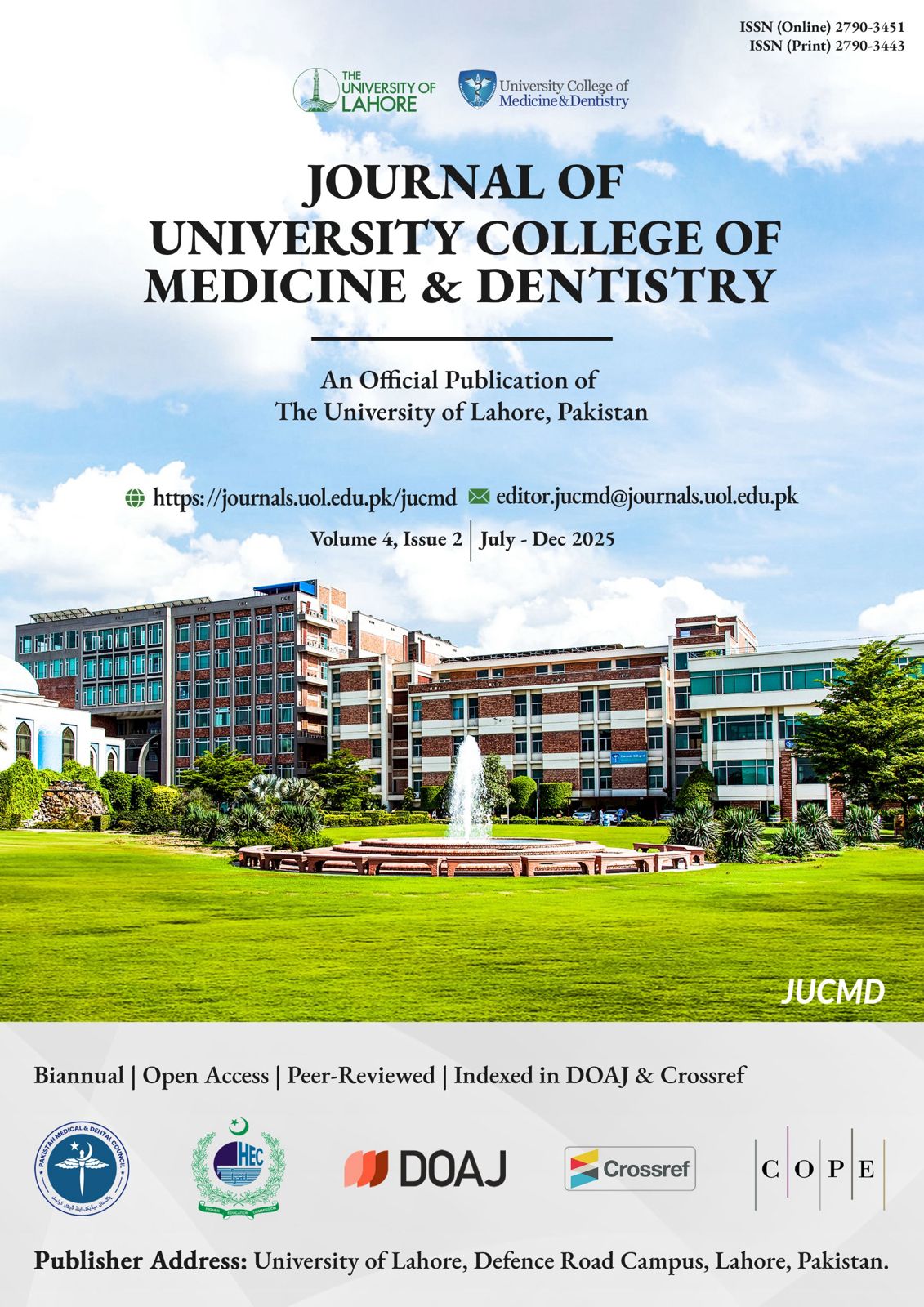Impact of Early Mobilization Versus Immobilization on Pain and Mobility After Total Hip Replacement
Early Mobilization After Total Hip Replacement
DOI:
https://doi.org/10.51846/jucmd.v4i2.4137Keywords:
Early Mobilization, Harris Hip Score, Immobilization, Range of Motion, Postoperative Rehabilitation, Total Hip Replacement, Visual Analogue ScaleAbstract
Objective: To evaluate the impact of early range of motion (ROM) exercises versus initial immobilization on postoperative pain and joint mobility in patients undergoing total hip replacement (THR).
Methodology: This single-centre, comparative experimental study was conducted at the Orthopaedic Surgery Department, Hayat Memorial Teaching Hospital, affiliated with Continental Medical College, Lahore, from 15th of October, 2024 till 15th of April, 2025. Forty adults, including both genders, aged 40–70 years undergoing unilateral or bilateral THR for advanced (Grade 4) primary osteoarthritis were randomly assigned into two groups: Group A (Early Mobilization, n=20) initiated supervised ROM exercises within 24 hours of surgery, while Group B (Immobilization, n=20) remained immobilized for the first postoperative week before starting the same protocol. Patients undergoing THR for fractures, tumours, infections, or revision surgery, or with comorbidities precluding early mobilization, were excluded. Pain was assessed using the Visual Analogue Scale (VAS), and hip mobility using the ROM subsection of the Harris Hip Score. Assessments were conducted at the 1st, 3rd, and 6th postoperative weeks by a blinded physiotherapist. Statistical analysis was done using SPSS v23, with significance set at p<0.05.
Results: Patients in the early mobilization group A demonstrated significantly greater reductions in VAS pain scores (Week 1: 5.0 vs 6.0; Week 3: 3.1 vs 5.0; Week 6: 1.0 vs 4.0; all p<0.05) and superior ROM scores (Week 1: 3.1 vs 2.0; Week 3: 4.1 vs 3.3; Week 6: 4.7 vs 4.0; all p<0.05) compared to the immobilization group B. No adverse events were reported in either group.
Conclusion: Early ROM exercises following THR result in faster pain relief and improved hip mobility compared to initial immobilization. Therefore, early mobilization should be incorporated into postoperative rehabilitation protocols to enhance recovery and patient outcomes.
Keywords: Total Hip Replacement, , Immobilization, Range of Motion, Visual Analogue Scale, Harris Hip Score, Postoperative Rehabilitation
Published
How to Cite
Issue
Section
License
Copyright (c) 2025 Rizwan Khan Lodhi, Imran Manzoor, Muhammad Moueen, Jehanzeb Khan, Imanullah Riaz

This work is licensed under a Creative Commons Attribution 4.0 International License.
Authors retain copyright and grant the journal right of first publication with the work simultaneously licensed under a Creative Commons Attribution 4.0 International License that allows others to share the work with an acknowledgment of the work's authorship and initial publication in this journal.
Authors are able to enter into separate, additional contractual arrangements for the non-exclusive distribution of the journal's published version of the work (e.g., post it to an institutional repository, in a journal or publish it in a book), with an acknowledgment of its initial publication in this journal.
Authors are permitted and encouraged to post their work online (e.g., in institutional repositories or on their website) prior to and during the submission process.







